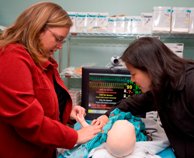Part II: ISO clinician leaders in patient safety and quality
 I recently gave a talk to the American Medical Student Association. The energy in the room was palpable. The students were excited, passionate and hopeful. We spoke about the urgent need to reduce preventable harm and to enhance value, and we discussed that they will need to be the ones to lead these efforts.
I recently gave a talk to the American Medical Student Association. The energy in the room was palpable. The students were excited, passionate and hopeful. We spoke about the urgent need to reduce preventable harm and to enhance value, and we discussed that they will need to be the ones to lead these efforts.
Yet, in speaking with them, I had to confront the sad reality that most of them will graduate ill-prepared to lead the improvements of quality and safety our health care system needs. They no doubt will know chemistry, biology and physiology, but they may not know about human factors, implementation science or performance measurement—the language of quality improvement. They will know orthopedics and genetics but they won't know teamwork and systems engineering. They likely know about German scientist Rudolph Virchow, the father of cell theory, yet they do not know John Kotter, the father of change theory whose model for leading change is highly effective and widely used. Without a doubt, these students will need to lead change.
Read More »Part II: ISO clinician leaders in patient safety and quality
 WANTED: Clinicians for long-term relationship to lead unit and department safety efforts. Must be passionate about improving patient outcomes and value, have skills needed to lead these efforts, and enjoy working as part of a team.
WANTED: Clinicians for long-term relationship to lead unit and department safety efforts. Must be passionate about improving patient outcomes and value, have skills needed to lead these efforts, and enjoy working as part of a team.